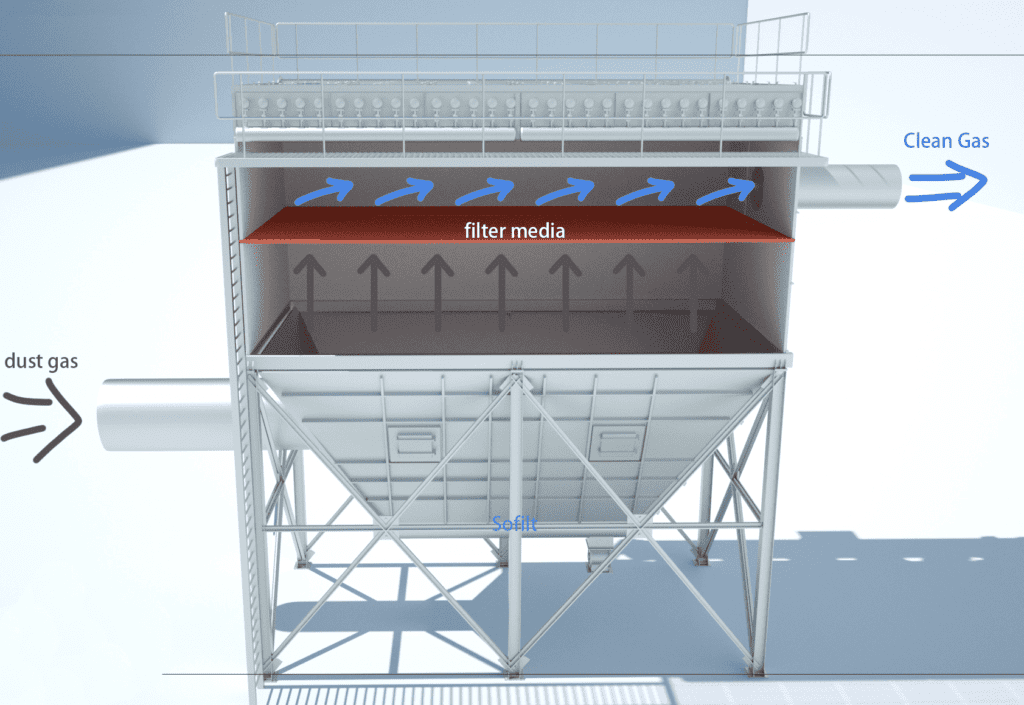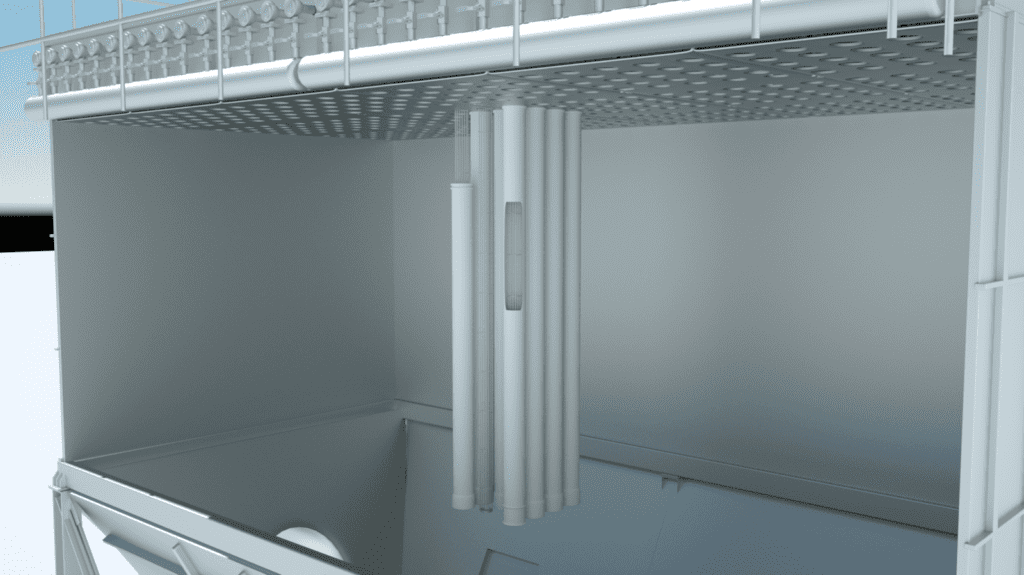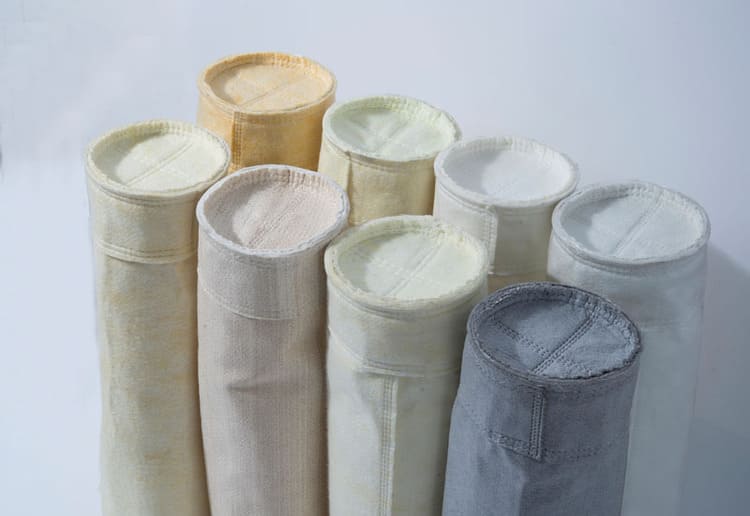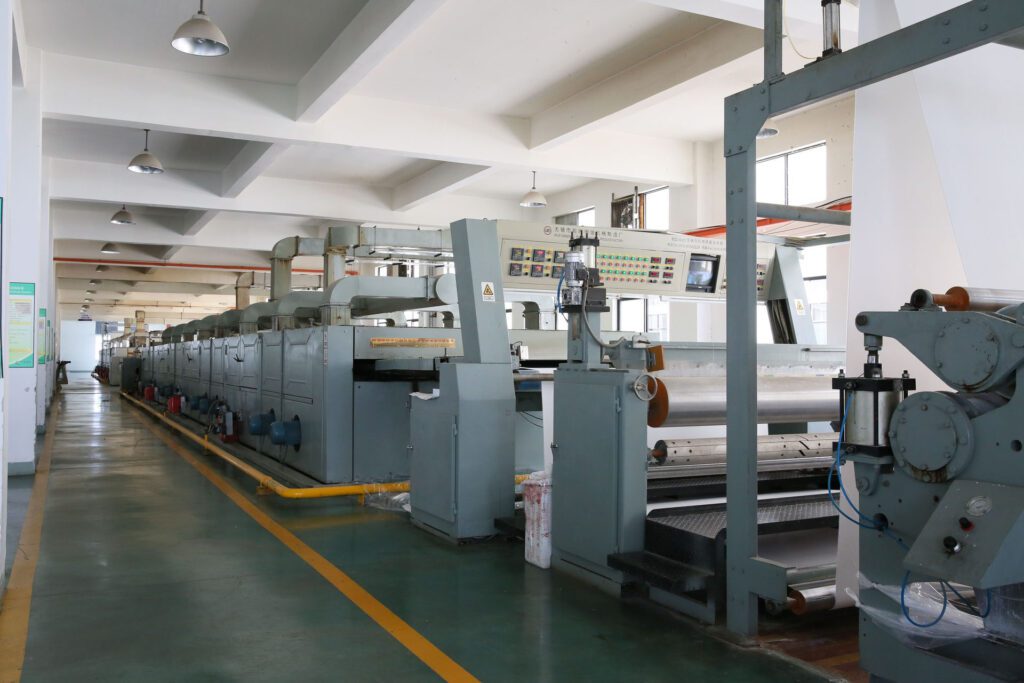Introduction

The baghouse system is an effective dust collection device that is used in a variety of industrial and commercial applications. It consists of fabric bags filled with dust-collecting material, and the air is pulled through the bags to trap particulate matter.
However, one common problem with baghouses is that when water comes into contact with the fabric bags, it can cause the dust to stick to the surface of the bag and make it difficult to clean. This can reduce the efficiency of the dust collection process and lead to higher operating costs. There are several possible causes for why baghouse dust collection fabric bags become wet and difficult to clean. These include:
a. The Dust Collection System May Be Located In An Area With High Humidity
When the dust is collected in a dry environment, but then transported to an area with high humidity, it can also become wet. This can happen if the collection system is located outside or near a source of water. This can cause the dust to become damp and stick to the bag, making it difficult to clean.
b. The Dust Collection Bags Or Filters May Have Leaks Or Tears
This is a common problem with fabric bags and filters, as they can develop tears or holes over time. These openings allow moisture to enter the the system and cause the dust to become wet and difficult to clean. If the fabric bag is not sealed properly, water can penetrate the fabric and become trapped inside. This can cause the dust to stick to the surface of the bag, making it difficult to clean.
c. The Dust Collection System May Not Have Adequate Ventilation Or Airflow

When the baghouse dust collection system does not have adequate airflow or ventilation, it may cause the collected dust to become damp or wet. This happens because the air is not able to circulate properly, allowing moisture to enter and become trapped inside the dust collection bag. This can lead to dust sticking to the bag and making it difficult to clean.
d. Improperly Designed Or Installed Dust Collection System
If the dust collection system is not properly designed or installed, this can cause the collected dust to become damp or wet. Poorly designed dust collection systems may have too many curves and small openings, which can restrict the airflow and cause moisture to become trapped. This can lead to the dust becoming wet and difficult to clean. As a result, the efficiency of the dust collection system can be greatly reduced.
e. The Dust Collection System May Be Receiving Water Or Moisture From An External Source
There can also be a situation where the dust collection system is receiving water or moisture from an external source. This can happen if there are leaks in pipes, roof or hoses, or if the collection system is located near a source of water.
This can cause the dust to become wet and difficult to clean. Normally, this type of problem can be avoided by keeping the system away from areas where there is a possibility for water or moisture to enter.
f. Collecting Dust That Is Either Naturally Wet Or Moisty
The dust collection system may be collecting dust that is naturally moist or wet, such as certain types of industrial waste or materials. In these situations, it is almost impossible to keep the dust from becoming wet and sticking to the bag. In these cases, it is best to use a filter system that is specifically designed to handle wet and moist dust.
Those kind of filters are specially designed to be able to handle the wet or moist dust, and have special coatings that help trap the moisture. It is also important to regularly inspect and maintain the dust collection system to ensure it is working properly and not allowing moisture or water to enter the system.
g. Dust Collection System May Be Operating At A Very Low Temperature That Is Too Low

The temperature of the dust collection system can also determine whether or not the collected dust becomes wet. If the temperature is too low, this can cause condensation to form on the inside of the dust collection bag, which can lead to moisture and wetting of the dust. This is why it is important to make sure that the dust collector is operating at an optimum temperature.
h. Using A Type Of Bag Or Filter That Is Not Suitable For The Type Of Dust Being Collected
The dust collection system may be using a type of bag or filter that is not suitable for the type of dust being collected, which can cause the collected dust to become damp or wet. This is why it is important to use the right type of bag or filter for the job. The wrong type of bag can restrict the airflow, which can lead to dust becoming wet and difficult to clean. If the dust collection system is not being used to its full potential, it may be due to the wrong type of bag or filter being used.
i. Dust Collection System May Be Overloaded Or Operating At Capacity
When the dust collection system is overloaded or operating at capacity, this can cause a decrease in the airflow. As a result, moisture may become trapped and the dust may become wet and difficult to clean.
This is why it is important to monitor the amount of dust being collected, and make sure that the system is not being overloaded. If the dust collection system is not working as efficiently as it can, this may be due to the dust collector being overloaded.
j. Using A Vacuum That Is Not Powerful Enough
When the dust collection system is overloaded or operating at capacity, this can cause a decrease in the airflow. As a result, moisture may become trapped and the dust may become wet and difficult to clean. This is why it is important to monitor the amount of dust being collected, and make sure that the system is not being overloaded. If the dust collection system is not working as efficiently as it can, this may be due to the dust collector being overloaded.
k. Improperly Maintained Or Not Regularly Cleaned

When the dust collection system is not properly maintained or regularly cleaned, this can also lead to the collected dust becoming wet. A clogged filter or bag can reduce the airflow, causing moisture to be retained, which can lead to the dust becoming wet and difficult to clean. Therefore, it is important to regularly inspect and clean the dust collection system in order to ensure it is working as efficiently as possible.
These are just some possible reasons why the baghouse dust collection system may get wet, making it difficult to clean the dust. It is important to carefully evaluate the specific conditions and factors that may be contributing to the issue and to take appropriate steps to prevent or address the problem.
Solutions To Prevent Baghouse Dust Collection Fabric Bag From Being Wet And Difficult To Clean Dust
In order to keep moisture out of the dust collection system, there are a few steps that can be used to prevent the baghouse dust collection system from getting wet and making it difficult to clean the dust, there several possible solutions can be considered. Some possible solutions include:
a. Maintaining The System Properly
By properly maintaining the dust collection system, including regularly inspecting and cleaning the filters and bags, this can help to prevent moisture from becoming trapped. Regular inspection and cleaning of the system can help to ensure that it is operating efficiently and that there are no blockages or clogs.
Regularly inspecting the bags or filters for leaks or tears, and repairing or replacing them as needed can help to prevent moisture from entering the system and wetting the collected dust.
b. Using Bags Or Filters That Are Suitable For The Type Of Dust Being Collected
It is important to use bags or filters that are suitable for the type of dust being collected, in order to prevent moisture from becoming trapped. The wrong type of bag or filter can restrict the airflow and cause moisture to become trapped, which can lead to dust becoming wet and difficult to clean. Some types of bags and filters are more resistant to moisture and may be less likely to cause the collected dust to become damp or wet.

c. Using A Vacuum That Is Powerful Enough
Using a vacuum that is powerful enough to effectively collect the dust can help to ensure that moisture does not become trapped. If the vacuum is not powerful enough, it may not be able to collect all of the dust, which can lead to moisture becoming trapped and the dust becoming wet.
d. Installing A Dehumidifier
In some cases, it may be necessary to install a dehumidifier in order to prevent moisture from entering the system. A dehumidifier can help to remove excess moisture in the air, which can prevent it from becoming trapped and wetting the collected dust.
e. Modifying The Design Or Installation Of The Dust Collection System
By modifying the design or installation of the dust collection system, you can help prevent moisture from entering the system and wetting the collected dust. This may involve adding ventilation or air flow systems, sealing any potential leaks or gaps, or installing moisture barriers or other protective measures.
f. Avoid Overloading Or Operating The Dust Collection System At Capacity.
By ensuring that the system is not overloaded or operated at capacity, this can help to prevent moisture from being trapped and wetting the collected dust. It is important to ensure that the system can handle the amount of dust being collected, and to take steps to reduce or avoid overloading the system.
These are just some possible solutions to the problem of the baghouse dust collection system getting wet and making it difficult to clean the dust. The specific solutions that are most appropriate will depend on the unique circumstances and conditions of the system in question.
Sofilt engineers can help to identify and implement the best solutions for each individual situation. If you have a dust collection issue, contact us today to discuss how we can help.
Conclusion

By implementing these solutions, it is possible to prevent the baghouse dust collection system from getting wet and making it difficult to clean the dust, which can improve its overall efficiency and effectiveness.
It is important to remember that the key to successful dust collection is proper maintenance and regular inspection of the system, which can help to ensure that the collected dust stays dry and easy to clean. Here at Sofilt, our team of experienced engineers is ready to help you identify the right solutions for your dust collection system. Contact us today to get started.




